CarEdge saved me over 4,500 dollars on a brand new Honda Pilot. I can't say thank you enough.
Price intelligence
Find a wide range of vehicle listings with market insights on new and used listings near you.


Help us personalize your CarEdge experience — it only takes a second.
Your answers help us personalize your CarEdge journey — we’ll follow up with tips and next steps that match your buying timeline.

Heading into 2023, larger families in the market for an electric SUV are left with few options. Unless you’re prepared to spend over $90,000 for a Tesla Model X or Rivian R1S, your best shot has been to stick to conventional hybrids or PHEVs. That’s all going to change with the arrival of the Kia EV9 and Hyundai IONIQ 7 in 2024. These two are set to become the first 3-row electric SUVs with affordable pricing. Here’s everything we know about the IONIQ 7 and Kia EV9’s release date, pricing and specs.
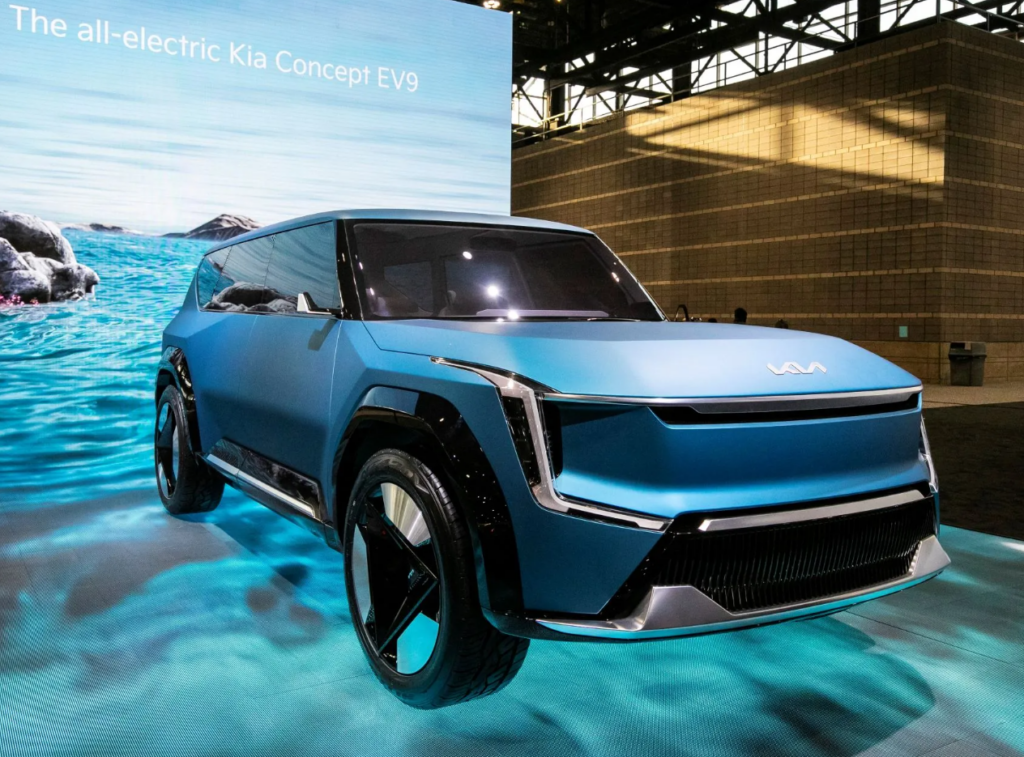
Revealed at the 2021 Los Angeles Auto Show as a concept, the EV9 builds upon the success of Kia’s electric flagship, the hot-selling EV6 electric crossover. Precisely how much of the EV9 concept will make it into the production-ready EV9 remains unknown, so we’ll proceed with a healthy dose of skepticism.
The Kia EV9 concept EV9 features a third row of seating, something that only three mainstream electric cars offer for the 2023 model year. That would be the Tesla Model X ($120,990+), the brand-new Rivian R1S ($78,000+) and the Vinfast VF-9, which is not yet in production, but will start at $57,500 or $76,000 with the battery. Yes, you read that right. The VF9 will require an additional $18,000 to buy the battery, or you can pay a monthly battery fee instead. More on that here. Let’s see how the Korean offerings will compare.
We expect the EV9 to launch with a starting price in the low to mid-$50,000 range. Why not cheaper? Raw material costs are increasing, making every EV more expensive to produce. Need proof? Check out lithium prices on commodity markets.
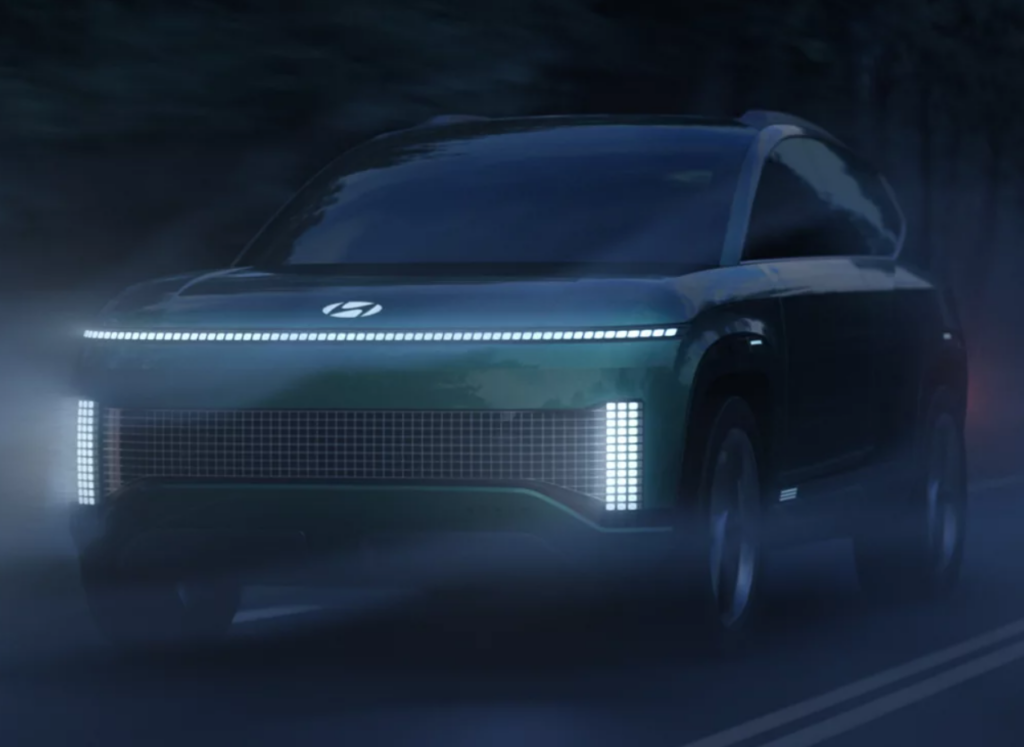
Automakers are looking for ways to sell higher-margin electric vehicles to fund their transition to EVs. One way they do that is to subsidize their headline-grabbing base model with affordable pricing with better equipped and much pricier mid and upper trim configurations. We expect this to be the only way that GM can offer a sub-$40,000 Chevy Equinox EV (more on the Equinox EV here). Kia and Hyundai are very likely to do the same. Expect the EV9 and IONIQ 7’s pricing to stretch from the low $50,000s all the way towards $70,000. Of course, the automakers are betting that you’ll want to upgrade to the more expensive options.
We track EV price updates. Here’s the latest.
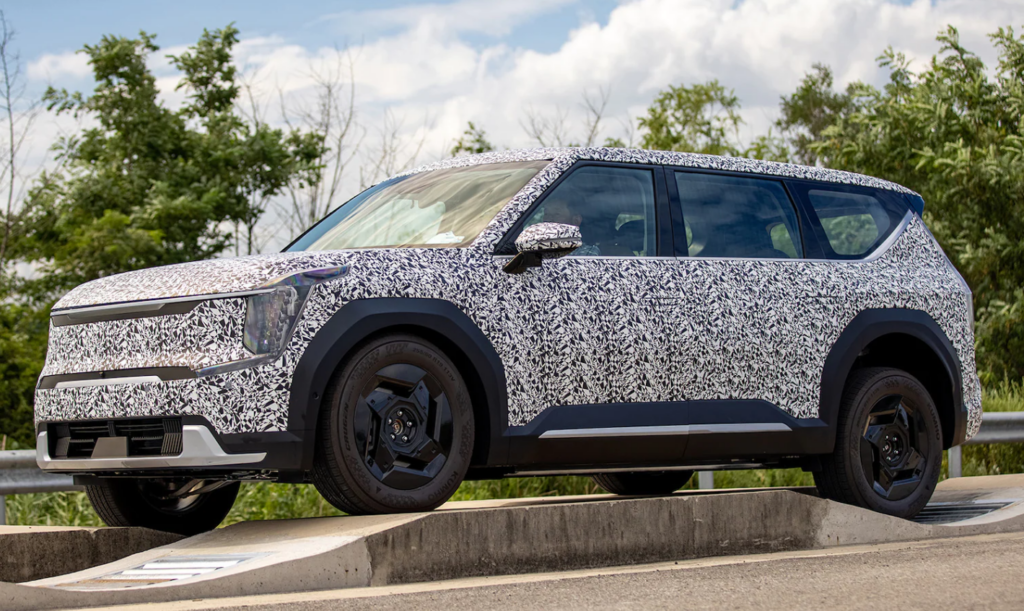
Multiple EV9s have been spotted doing road testing, and all signs point towards a production-ready unveiling in early to mid 2023. Although we haven’t seen any IONIQ 7s testing as of late 2022, we still expect the two to debut together, much like the Hyundai IONIQ 5 and Kia EV6 did in late 2021.
Finance with CarEdge! We work with trusted credit unions offering low rates and great customer service. Learn more and get pre-approved!
The Hyundai IONIQ 7 and Kia EV9 will launch in late 2023 as 2024 models. Of course, that’s unless the worsening semiconductor chip shortage and broader supply chain constraints delay the release date of the model. By then, the Vinfast VF9 will have arrived too. Although Vinfast doesn’t have the brand-recognition and dealer network of Hyundai and Kia, early media reviews are largely positive. You can learn more about Vinfast’s unique battery subscription model here.
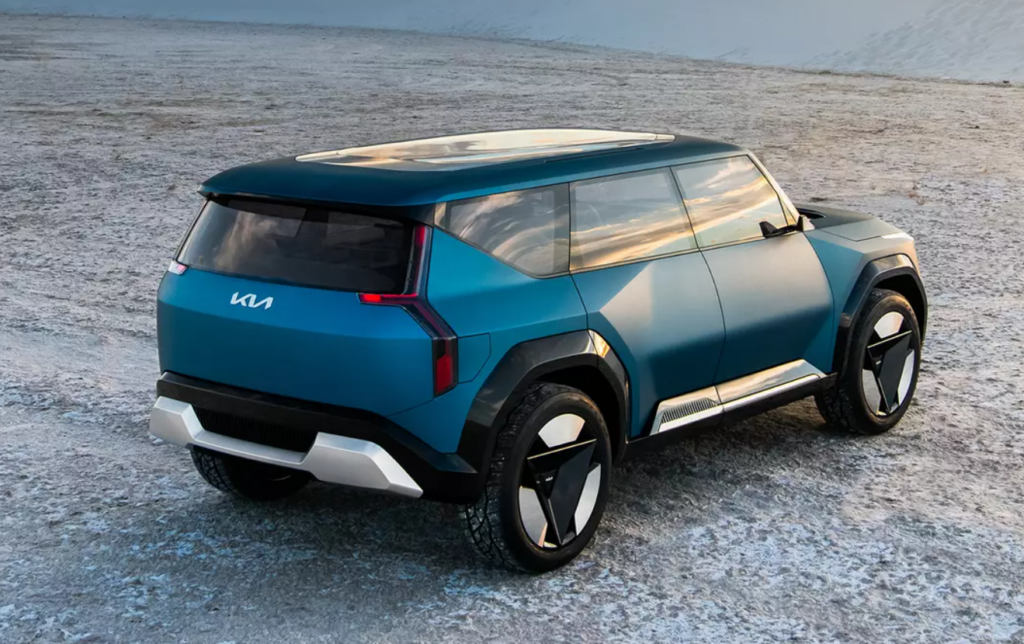
The Kia EV9 concept that was unveiled in 2021 was a bit over-the-top. It featured a solar panel on the front hood, a 27-inch infotainment and gauge display, and a pop-up steering wheel that is unlikely to survive the transition to production. The IONIQ 7 debuted as a literal living room on wheels. Fantasies aside, what will make it into production? Expected range, charging and pricing are enough to get us excited.
Kia and Hyundai claim that these two electric SUVs will get 300 miles of range on a charge. Before you demand more miles, remember that SUVs (and trucks) are by design inefficient. That means more batteries are needed to squeeze the same range when compared to a smaller crossover or sedan. Don’t expect 400 mile+ 3-row electric SUVs to become commonplace, let alone affordable, this decade.
The EV9 and IONIQ 7 will share the Electric Global Modular Platform (e-GMP) that Hyundai Motor Group engineered. There’s great info on this powertrain here. My own 2022 Hyundai IONIQ 5 has this same powertrain, and I love it. Range estimates are accurate, I’ve had minimal range loss after 15,000 miles, and charging is amazingly quick.
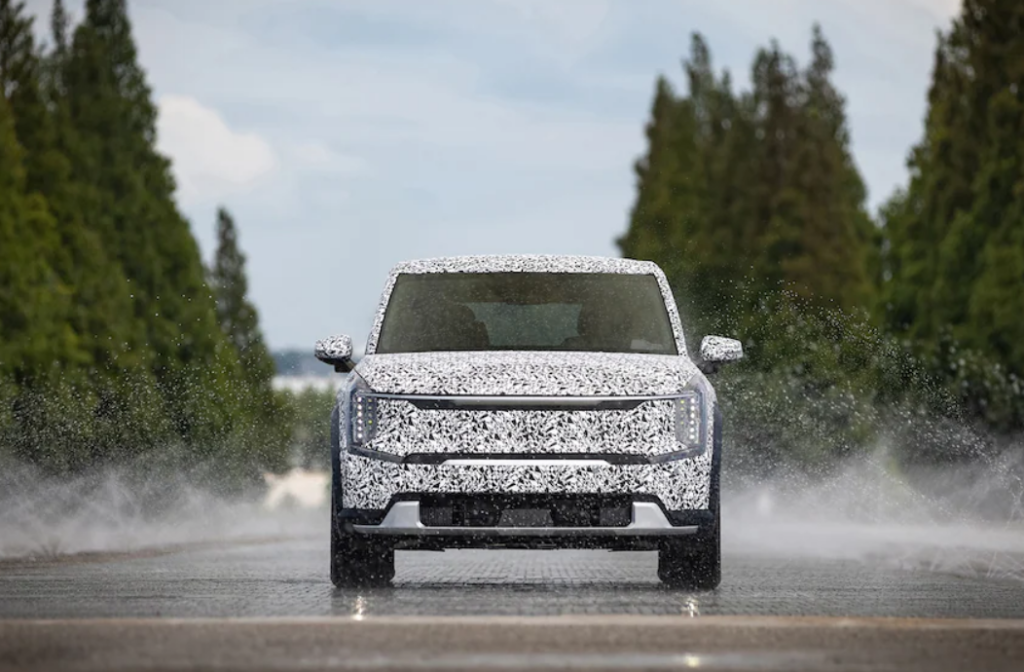
Kia says that the EV9 will be able to charge on 350-kilowatt DC fast charging stations, such as those found at Electrify America. We already know a lot about the e-GMP powertrain’s charging capabilities. With 350 kW charging, the EV9 will be able to add 200 miles of range in under 30 minutes. In all likelihood, the IONIQ 7 will match these specs.
Currently, Hyundai sources batteries from SK Innovation. In late 2021, SK Innovation announced plans for two battery plants at a single site in Commerce, Georgia. That’s just down the road from where their largest customer, Hyundai Motor Group, is building a massive EV production facility. We expect SK Innovation to supply American-made batteries for the IONIQ 7 and EV9.
That leads us to our final topic: EV tax credits in the US.
Will the Kia EV9 and Hyundai IONIQ 7 Qualify for EV Tax Credits? Yes, but it’s possible that the two models won’t be eligible until late 2024 or 2025. Why? Both Kia and Hyundai have publicly shared their intentions of speeding up construction at their new EV production facilities in Georgia. Even with the quicker timeline, executives say that they hope to begin volume production in the third quarter of 2024.
In order for any electric vehicle to qualify for the revised EV tax credit, the vehicle and buyer must meet several criteria. The most notable are the following:
See FULL DETAILS on the new EV tax credit.
Truthfully, Hyundai and Kia have not yet released much information about their two new 3-row electric vehicles. When the two OEMS unveil the production versions of the EV9 and IONIQ 7 in early 2023, we’ll update this page with interior images, additional specs, and all that we learn.
In the meantime, check out the fastest-growing EV forum on the internet. It’s free, and full of thousands of drivers at all levels of EV interest.

Interest rates are rising, and inflation is at record highs, but deals can still be had when buying a new car. Every month, the team at CarEdge pores over the latest offers from every automaker. The result is a one-stop resource to share the very best new car deals with you.
Not finding what you’re looking for? We’ve included links to each automaker’s website. Check back frequently, as this living page will be updated regularly.
Check out these other CarEdge car buying resources:
The Best Auto Loan Rates Right Now
The Best Lease Deals This Months
These 5 Brands Are Negotiable Right Now
Finance Buick SUVs (Encore, Envision, Enclave) at 3.99% APR for 72 months.
Buick Encore: $179 per month for 24 months with $5,449 due at signing
Buick Envision: $279 per month for 24 months with $3,739 due at signing
Cadillac CT4: $439 per month for 36 months with $3,749 due
Cadillac XT4: $379 per month for 36 months with $3,579 due at signing
See Cadillac listings near you.
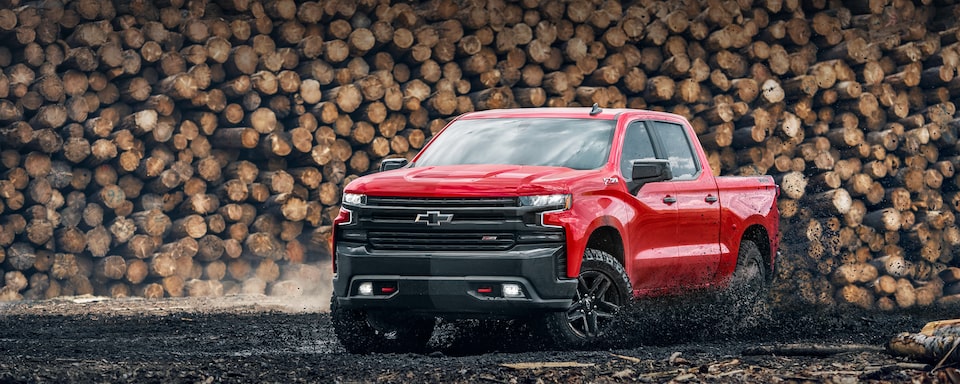
Best Chevrolet financing offer:
2.99% APR for 60 months for the Silverado 1500, Colorado and Equinox.
Chevrolet lease deals:
Chevrolet Trailblazer: $259 per month for 24 months with $3,109 due at signing
Chevrolet Blazer: $279 per month for 24 months with $2,369 due at signing
Silverado 1500 Crew Cab 4WD LT: $399 for 36 months with $3,579 due at signing
See details on Chevrolet deals.
Chrysler Pacifica Hybrid: $599 per month for 39 months with $5,499 due at signing
See details on Chrysler deals.

In February, Ford is advertising 3.9% APR for 60 months for select models
Learn more about Ford deals at Ford.com.
Best GMC financing offer:
2.99% APR for the GMC Sierra 1500
3.9% APR for the GMC Terrain
GMC lease offers:
GMC Acadia: $289 per month for 24 months with $2,309 due at signing
GMC Terrain: $279 per month for 24 months with $3,949 due at signing
Best Honda financing offers:
Honda Pilot, Passport, Ridgeline: 1.9% APR for 24 – 48 months
Best Honda lease offers:
Honda Civic: $269 per month for 36 months with $3,399 due
Honda CR-V: $349 per month for 36 months with $4,499 due
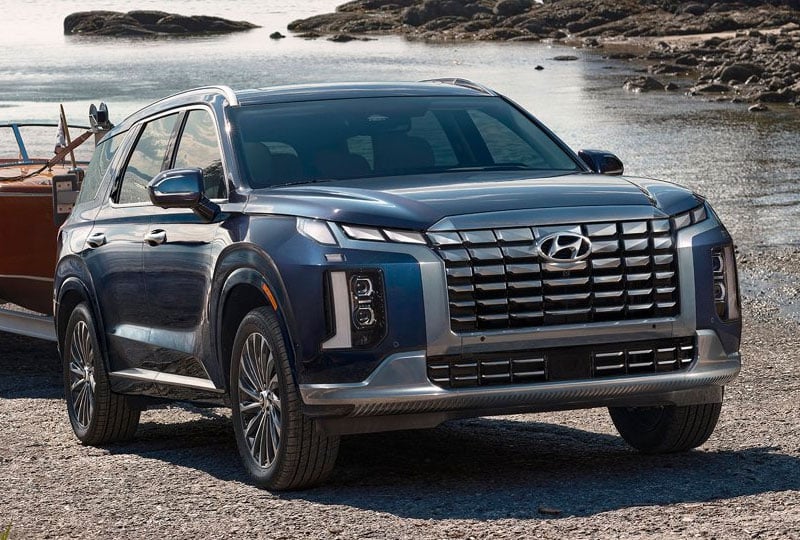
Hyundai lease offers this month are good, but the amount due at signing has increased this month.
Hyundai Venue: $151 per month with $3,281 due
Hyundai Elantra: $219 per month with $3,299 due
Hyundai Kona: $209 per month with $3,999 due
Hyundai Tucson: $279 per month with $3,999 due
Hyundai Santa Fe: $269 per month with $3,999 due
See details on Hyundai lease and finance deals.
Jeep leases are attractive in February.
Jeep Wrangler: $409 per month for 42 months with $5,099 due at signing
Jeep Compass: $347 per month for 42 months with $3,799 due at signing
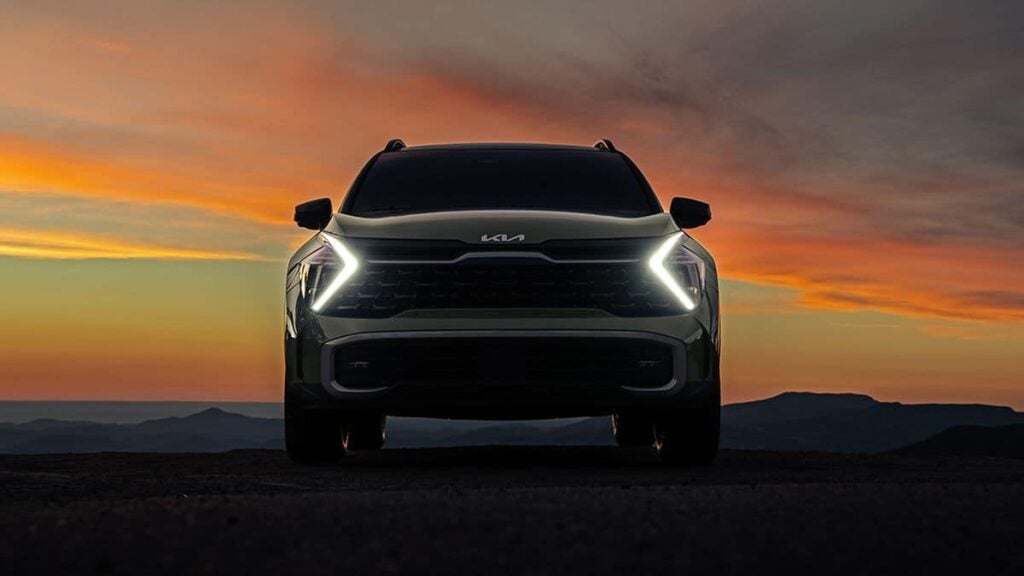
Best Kia financing offer:
2.9% APR for 48 months
Kia Forte
Kia Sorento (2022)
Kia Soul
Best Kia lease offers:
Kia Sportage: $279/month for 36 months with $3,499 due
Kia Seltos: $249/month for 36 months with $3,320 due
See details on Kia deals at Kia.com.
3.49% APR for 48 months for the RX.
$2,000 lease cash for select RX styles.
ES 250 AWD: $509/month for 39 months with $3,999 due
See details on Lexus deals at lexus.com.
Best Mazda financing offer:
2.49% APR for 36 months + NO payments for 90 days
Best Mazda lease offers:
Mazda CX-30: $239 per month for 24 months with $2,999 due at signing.
Mazda CX-5: $299 per month for 33 months with $3,499 due at signing.
See details on Mazda deals at Mazdausa.com.
0.0% APR for 36 months
1.9% APR for 36 months
Nissan Altima: $199 per month for 18 months with $2,309 due
Nissan Leaf: $269 per month for 36 months with $5,259 due
Nissan Rogue (AWD): $299 per month for 36 months with $3,459 due Nissan Murano (FWD): $299/month for 24 months with $2,099 due
Learn more about Nissan deals here.
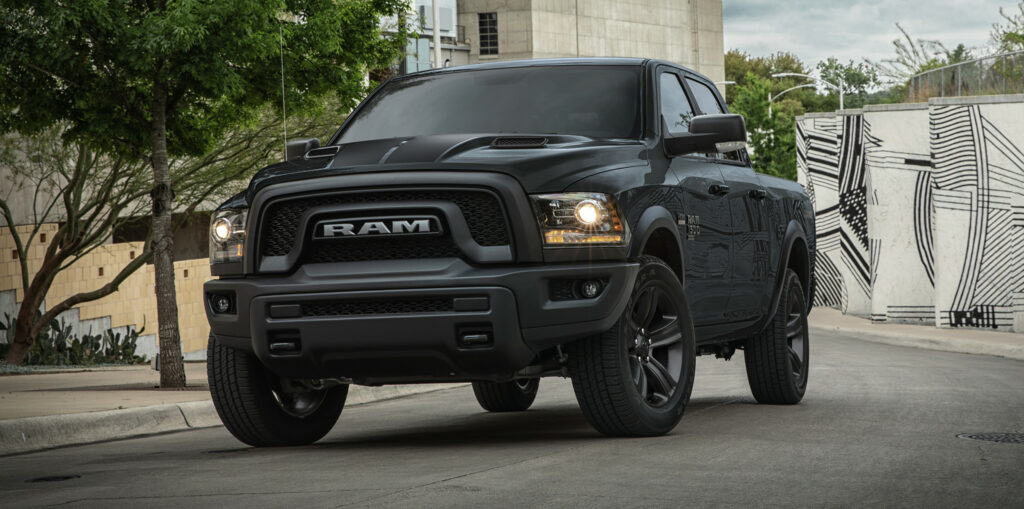
4.9% APR for 72 months and no payments for 90 days for the Ram 1500 and Ram 2500
$4,000 cash allowance for Ram 1500
Lease: Ram 1500: $309/month for 42 months, $5,499 due
Learn more about Ram deals at Ramtrucks.com.
Best Subaru financing offers:
2.9% – 3.9% APR for 48 months for these models:
The best Subaru leases:
Subaru Outback: $345 per month for 36 months with $3,515 due
Subaru Ascent: $359 per month for 36 months with $3,259 due
Best Toyota financing offers:
2.99% APR for 60 months
3.49% APR for 48 months
Toyota Corolla Cross: $331 per month for 39 months with $2,976 due
Toyota RAV4: $413 per month for 36 months with $3,063 due
Toyota Highlander: $393 per month for 39 months with $4,053 due
Learn more about Toyota deals here.
With interest rates rising and inflation putting pressure on automakers and their dealer networks, the only thing that could bring better new car deals would be plummeting demand. We’ve seen signs of weakening demand and higher new car inventory, but nothing considered drastic. Expect auto loan interest rates to climb in 2023. The best car deals in February won’t last.
These are the 5 car brands you CAN negotiate right now!
Thinking about factory ordering? These are the latest wait times our community is reporting.
These are the most marked-up new cars in 2022
Looking for something else? Visit our blog, or consult 1:1 with a real CarEdge Auto Expert to get customized help with your car deal. It could save you thousands!

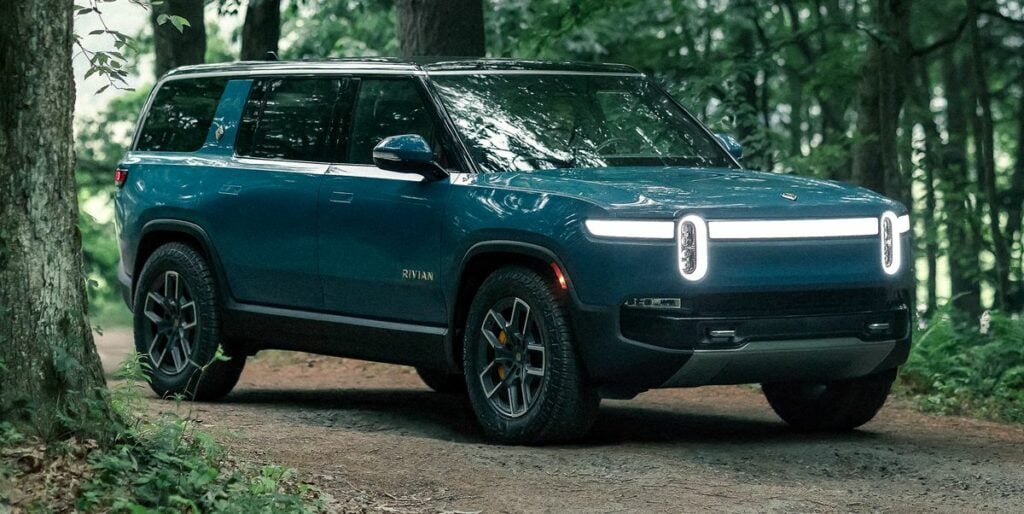
If you’re thinking about hauling the kids off to school with zero emissions, today’s EVs offer more range, faster charging and greater fuel savings. The best electric cars and SUVs for families are available in a wide range of options to meet your needs, and an even wider range of price points. These are the best electric crossovers and SUVs on sale in 2024.
If you need space for four, five, or maybe six people (plus those furry friends), these 3-row electric SUVs are built for you.

Reviewers absolutely LOVE the new Kia EV9. As the first mainstream 3-row electric SUV to hit the American market, the EV9 was highly anticipated. We can confirm that it has been worth the wait. Step inside this full-size SUV, and you’ll immediately note the spaciousness and luxurious feel of this premium-feeling Kia. This one is worth a test drive.
Price: $56,395 – $75,395
Range: 230 – 304 miles
Charging (public fast charger): can add 200 miles in 18 minutes
Passenger volume: 159 cubic feet (three rows, seats 6)
Cargo volume behind second row: 44 cubic feet
Total cargo volume: 82 cubic feet
NHTSA safety rating: Not Rated (5-Star Euro Rating)
See Kia EV9 new and used listings with local market data.

Rivian is just beginning to ramp up production and sales of the Rivian R1S, the full-size electric SUV companion to the R1T electric truck. The 2024 Rivian R1S is a blend of luxury and off-road capability. This 3-row EV is made in America, at a converted manufacturing facility in Normal, Illinois. We can only recommend this great vehicle if you live within a reasonable distance of one of Rivian’s service centers. If you end up needing service, you don’t want to pay for a long-distance tow truck!
Price: Starting at $74,900
Range: 316 miles
Charging (Public fast charger): can add 140 miles in 20 minutes
Passenger volume: (three-row SUV)
Cargo volume behind second row: 46.7 cubic feet
Total cargo volume: 104.7 cubic feet
Safety rating: Top Safety Pick+ by IIHS
Learn more about the Rivian R1S.
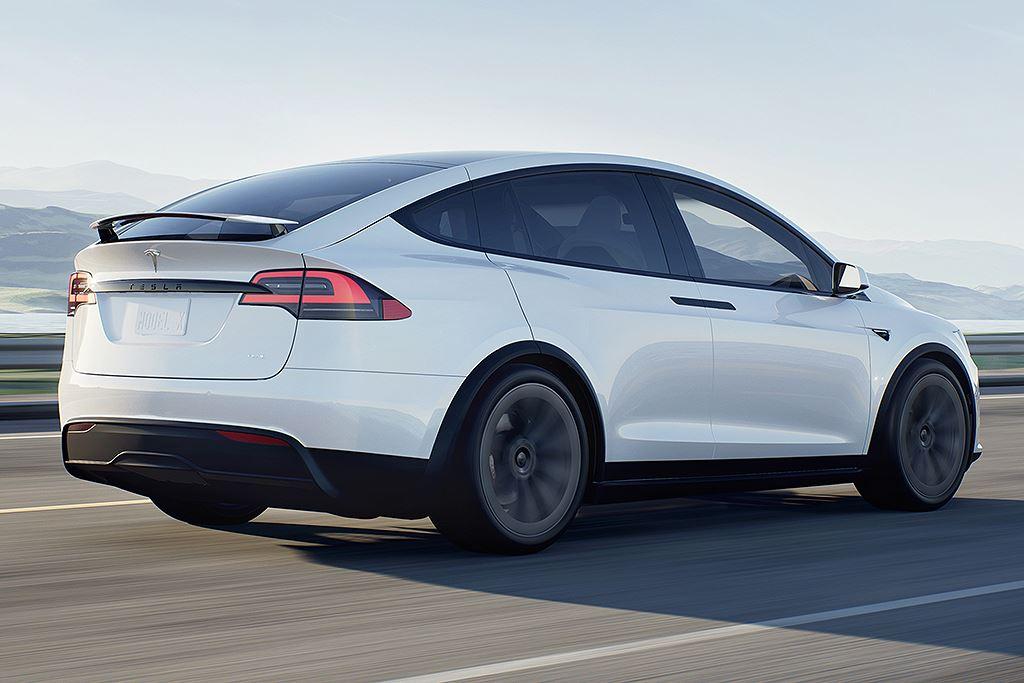
With gull-wing doors and a massive glass roof, there’s no hiding the fact that the Tesla Model X is a luxury SUV. In 2024, the Model X has seen multiple price cuts, and now starts around $80,000.
Price: $79,990 to $120,000+
Range: 351 miles
Charging (Public fast charger): can add 200 miles in 15 minutes
Passenger volume: N/A (three rows)
Cargo volume behind second row: 42.5 cubic feet
Total cargo volume: 92.3 cubic feet
Safety rating: 5 stars from Euro NCAP
See Tesla Model X new and used listings.
These electric crossover SUVs are the highest-rated, most-loved EVs for families today. Although they lack a third row, they’re plenty big enough for most families of four. Spaciousness, pricing, range and charging speeds vary from one electric model to another. We’ve also included NHTSA safety ratings if they’re available.

The Model Y is the best-selling electric vehicle in America. Model Y prices have fallen 20% from 2022’s highs. It’s now possible to buy a Model Y for well below $50,000 with the point-of-sale EV tax credit. Although it’s known for autonomous driving, the full capability (known as FSD) is a $15,000 package.
Price: $49,990 to $74,990
Range: 279 to 330 miles
Charging (Public fast charger): can add 200 miles in 15 minutes
Passenger volume: 106 cubic feet
Cargo volume behind second row: 26.6 cubic feet
Total cargo volume: 72 cubic feet
NHTSA safety rating: 5 stars
See Model Y new and used listings.
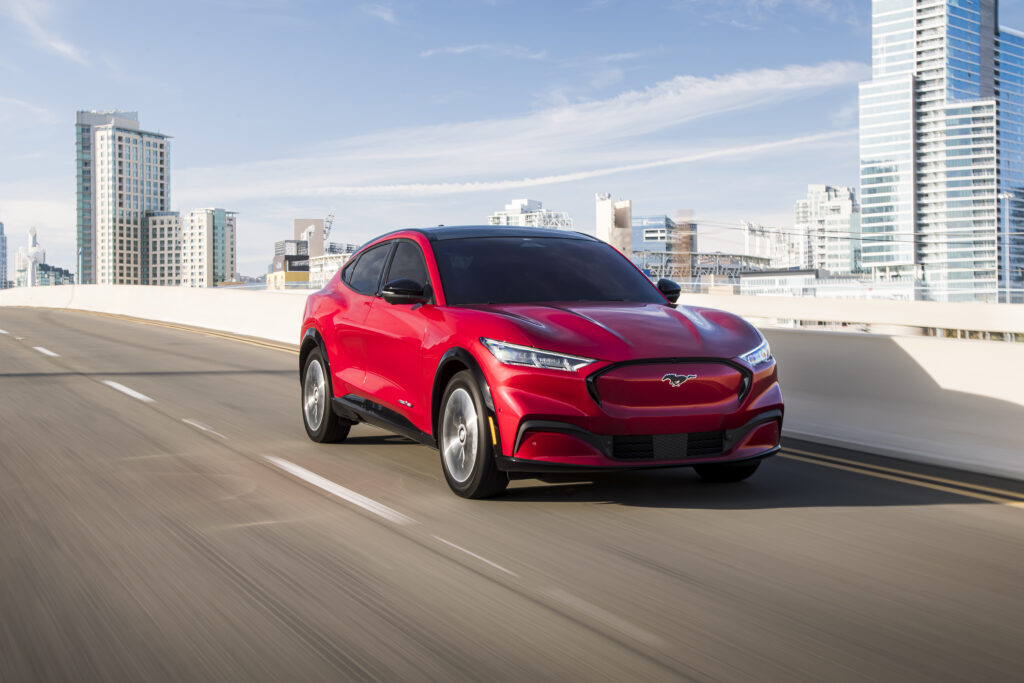
Ford’s first serious EV is very popular among small families and speed freaks alike. If the Mustang brand has a special place in your heart, this just might be the EV for you.
Price: $45,995 to $63,575+
Range: 224 to 312 miles of range
Charging (Public fast charger): can add 120 miles in 20 minutes
Passenger volume: 104.5 cubic feet
Cargo volume behind second row: 29.7 cubic feet
Total cargo volume: 59.7 cubic feet
Safety rating: IIHS Top Safety Pick
See Mustang Mach-E new and used listings.

I can confidently say that the IONIQ 5 is a great family car, and that’s because my wife and I haul our own kiddo around in this segment-bending electric crossover with hot hatch flavors. The IONIQ 5 has won many awards, including Car and Driver’s 2022 EV of the Year. It charges VERY fast, and that’s what I love most about the car.
Price: $40,925 to $57,400+
Range: 220 to 303 miles
Charging (Public fast charger): Adds 200 miles of range in 20 minutes
Passenger volume: 106.5 cubic feet
Cargo volume behind second row: 27.2 cubic feet
Total cargo volume: 59.3 cubic feet
Safety rating: Top Safety Pick Plus from IIHS
See Hyundai IONIQ 5 new and used listings.
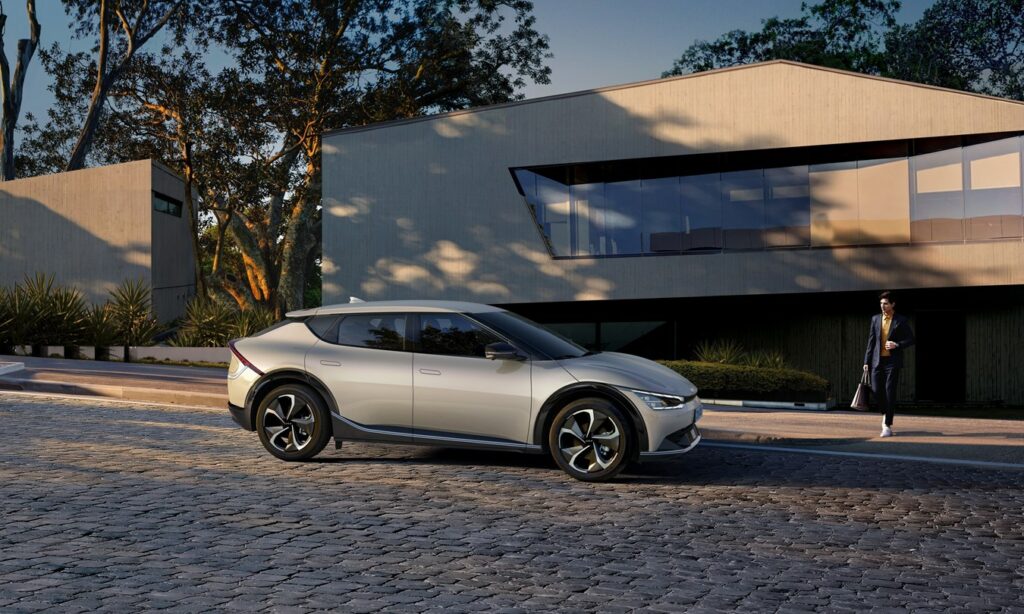
The spaceship-styled EV6 is Kia’s version of the Hyundai IONIQ 5, which shares the e-GMP electric powertrain. The Kia EV6 has slightly less passenger and cargo space than the Hyundai, but it’s better range and equally fast charging make it an obvious feature on this list of best electric cars for families.
One thing to bear in mind: most EVs, including the EV6 and IONIQ 5, have a flat floor, meaning that there’s a bit more interior space than it would appear. The best thing you can do is check one out in person!
Price: $43,920 to $61,600+
Range: 274 to 310 miles
Charging (Public fast charger): Adds 200 miles of range in 20 minutes
Passenger volume: 103 cubic feet
Cargo volume behind second row: 24.4 cubic feet
Total cargo volume: 50.2 cubic feet
Safety rating: In Europe, the EV6 earned 5 stars
See Kia EV6 new and used listings.
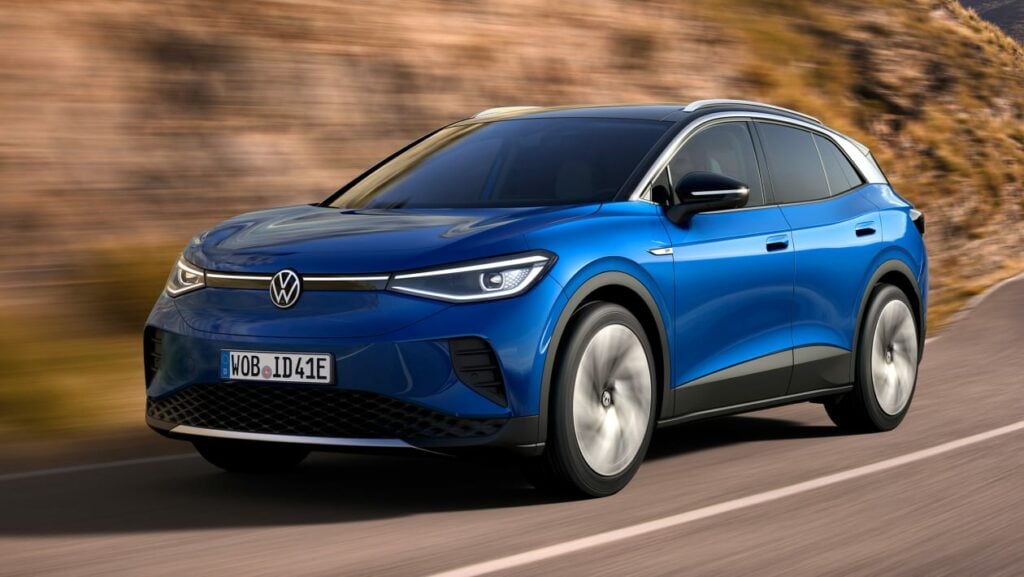
We have great news for those in search of an affordable and capable EV that qualifies for the federal tax credit. The ID.4 is now made in Tennessee at Volkswagen’s Chattanooga plant! The newest American-made EV is equipped with decent range, okay charging, and a comfortable interior that’s designed for families. However, don’t expect Tesla-level infotainment. The ID.4 is best for those who are content with the simpler things in life.
Charging speeds are merely okay, but the 2024 model year gets a decent improvement.
Price: $38,790 to $55,000
Range: 208 to 275 miles
Charging (Public fast charger): Adds up to 190 miles of range in 30 minutes
Passenger volume: 99.9 cubic feet
Cargo volume behind second row: 30.3 cubic feet
Total cargo volume: 64.2 cubic feet
Safety rating: Top Safety Pick Plus
See Volkswagen ID.4 new and used listings.
The Inflation Reduction Act eliminated the original EV tax credit and replaced it with a completely revised tax credit. For vehicles that qualify, up to $7,500 in tax credits are available. However, the incentive is based on battery sourcing, which will be determined by the automakers. Income limits restrict buyer eligibility, too. See the full details on qualifying models here.
There’s also a used EV tax credit for the first time, but a price cap of $25,000 eliminates every single family EV on this list.
Generous state and local incentives may make the switch to an EV much more affordable, depending on where you live. See the most generous state-level EV incentives, and check with the DSIRE clean energy incentive database to find more incentives for your specific location.
Which family-size electric car are you considering? Let us know in the comments, or better yet join the conversation at our CarEdge Community forum.
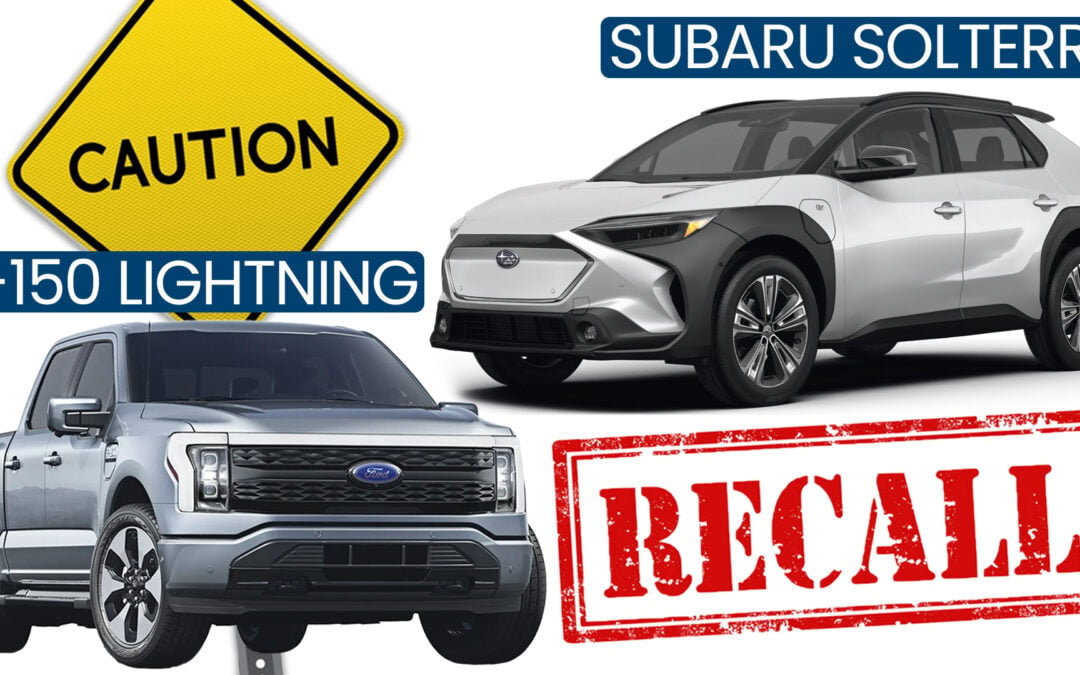
As drivers warm up to the idea of going electric, every electric vehicle recall is sure to turn heads, regardless of severity. 2022 is a huge year for automakers unveiling their next generation of electric vehicles. With over half a trillion dollars invested in EVs, there’s a lot riding on the success of these new arrivals. Several electric vehicle models have already been subjected to recalls. Fortunately, most of them do not directly involve electric powertrains. These are the EVs facing recalls in 2022. We’ll update this page as future recalls are inevitably announced.

October 2022 – Rivian recalled every vehicle it has produced, including all R1T electric trucks, R1S electric SUVs, and EDVs produced for Amazon. The vehicles were recalled because of concerns that a bolt in steering assemblies wasn’t sufficiently tightened.
No accidents have been reported, but the recall is still causing massive headaches for the young automaker. The recall fix is already available, it’s as simple as tightening a (very important) screw. However, the challenge lies in the limited locations of Rivian Service Centers. For example, the state of Texas has one service center in Houston. There are just 5 Rivian service centers on the entire East Coast. Most locations are in California. See the full list of locations.
Fortunately, Rivian has mobile service technicians, but they’ll surely have their hands full. See additional details on the Rivian recall here.
June 23, 2022 – The Toyota bZ4x and Subaru Solterra are EV siblings co-developed by the two Japanese automakers. Just a month into deliveries, the two models have been recalled globally due to an issue with their wheel hub bolts that could in fact cause the wheels to fall off. Fortunately, the issue does not involve Toyota and Subaru’s brand-new electric powertrain.
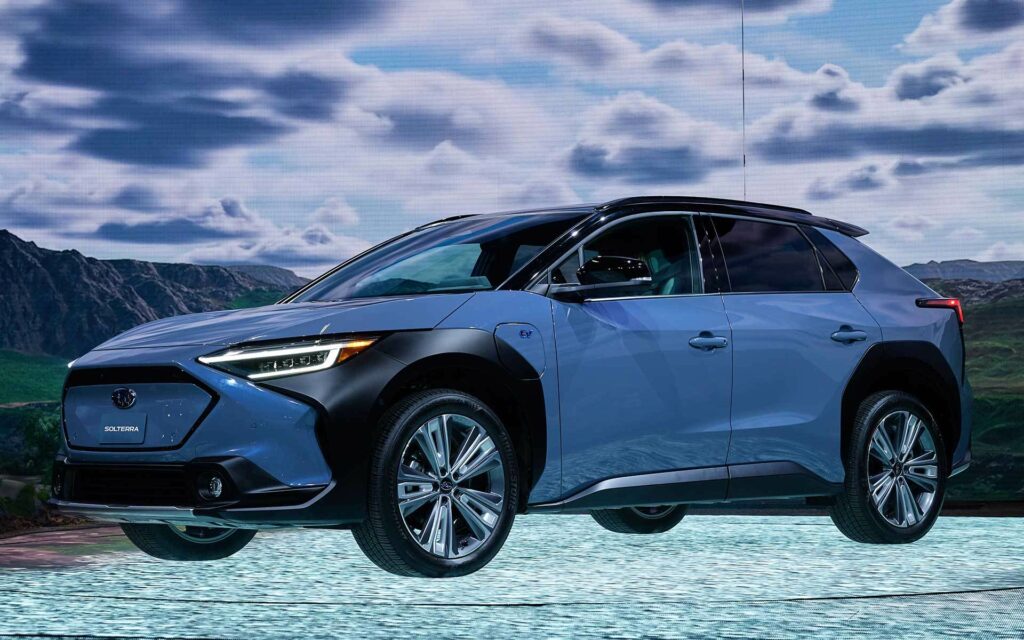
The US National Highway Traffic Safety Administration (NHTSA) recall notice warns owners not to drive their vehicles until they are repaired. This isn’t a good look considering the significance of Toyota’s first all-electric vehicle. A bZ4X and Solterra recall remedy is currently under development according to the US NHTSA.
“The cause of the issue and the driving patterns under which this issue could occur are still under investigation,” the notice says.
The recall affects 2,700 bZ4x models and 2,600 Solterras globally. See if your Toyota bZ4X VIN number is subject to the recall at Toyota’s official recall page. You can check if your Subaru Solterra is impacted at Subaru’s official recall site.
June 27, 2022 – The electric F-150 Lightning is the most-anticipated new model making a debut this year. Ford Motor is recalling 2,906 F-150 Lightnings because of a software issue that could result in a failure to provide low tire pressure warnings. The 200,000 F-150 Lightning reservation holders are certainly relieved to find that this recall is not related to Ford’s all-new electric powertrain.
In this particular recall, simple human error is at fault. Ford says that the recommended tire cold inflation pressure was incorrectly set to 35 psi instead of 42 psi. No accidents have resulted from this F-150 Lightning recall, but it’s the fix that’s noteworthy. The recall gives Ford a publicized opportunity to show the world that the F-150 Lightning is OTA capable. Over-the-air updates, first implemented on a large scale by Tesla, are no easy feat. Plenty of automakers can update navigation and infotainment via OTA update, but few are capable of firmware OTA updates that tinker with the powertrain.
Learn more about how over-the-air updates are changing how cars get serviced.
F-150 Lightning Recall Fix: Those who wish to receive the recall fix immediately may head to a Ford dealership service center immediately. Otherwise, Ford says the over-the-air update will be available to download via home WiFi within a few weeks. Check to see if your F-150 Lighting VIN number is impacted by the recall at Ford’s official recall page.

May 13, 2022 – As an IONIQ 5 owner myself, I was not thrilled to see the first manufacturer recall coming in one month into ownership. The US National Highway Traffic Safety Administration (NHTSA), Hyundai and Kia have announced a recall for select VIN numbers of the 2022 model year Hyundai IONIQ 5 and Kia EV6.
The IONIQ 5 and EV6 share Hyundai Motor Group’s new e-GMP electric platform. The recall is for the potential for disruptions to the vehicle’s parking actuator system when the vehicle is off. Sudden voltage fluctuations may occur while the vehicle is off, potentially causing the parked vehicle to disengage from ‘Park’ momentarily. If this occurs while the vehicle is parked on uneven terrain, vehicle rollaway is possible.
IONIQ 5 and EV6 recall fix: A fix is already available, but you’ll have to visit your Hyundai or Kia dealership service center. I just got the recall fix done at my local Hyundai dealer. They had never seen an IONIQ 5 before, and one employee asked if I was coming in for an oil change. Nevertheless, I was in and out of the dealership in about 30 minutes.
Check to see if your Hyundai IONIQ 5 is involved in this recall at Hyundai’s official recall page. You can see if your Kia EV6 is impacted at Kia’s official recall page.
Learn more about the IONIQ 5 recall here. Unfazed by the recall and looking to buy an IONIQ 5? Here’s how I found a Limited AWD IONIQ 5 at MSRP. It wasn’t easy.

June 14, 2022 – Ford is recalling all 50,000 Mustang Mach-E electric crossovers because of the risk of power loss. The possible power loss could occur while the vehicle is in motion or parked.
The recall is due to problems with the Mustang Mach-E’s battery contactor, which is a switch that determines which vehicle components the battery sends power to. Interestingly, the power loss is more likely to occur when putting the pedal to the metal for maximum acceleration, according to Ford. If power loss occurs, a powertrain malfunction warning light will illuminate on the dashboard, and the vehicle will display “Stop Safely Now’ in the gauge cluster behind the steering wheel. Clearly, it’s time to pull over immediately with a message like that.
Ford Mustang Mach-E recall fix: Ford has pursued Tesla in more ways than one. In addition to ending EV lease buyouts and going for direct-to-consumer sales via Ford Model e, Ford has brought over-the-air updates to its lineup. Ford says that Mustang Mach-E owners will receive an over-the-air update sometime in July to install a software remedy for the recall. Until then, a stop-sale is in place.
Learn more about the Ford Mustang Mach-E recall at Ford’s official recall page.
Several hundred automotive recalls happen every year across vehicle classes and powertrains. There will surely be more to come. What we’ll be keeping an eye on is how the latest electric powertrains are performing. Luckily, most of the EV recalls to date have been for components other than the electric powertrain. However, we all remember how the Chevrolet Bolt recall and fire hazard tarnished GM’s reputation. Check back for the latest updates!
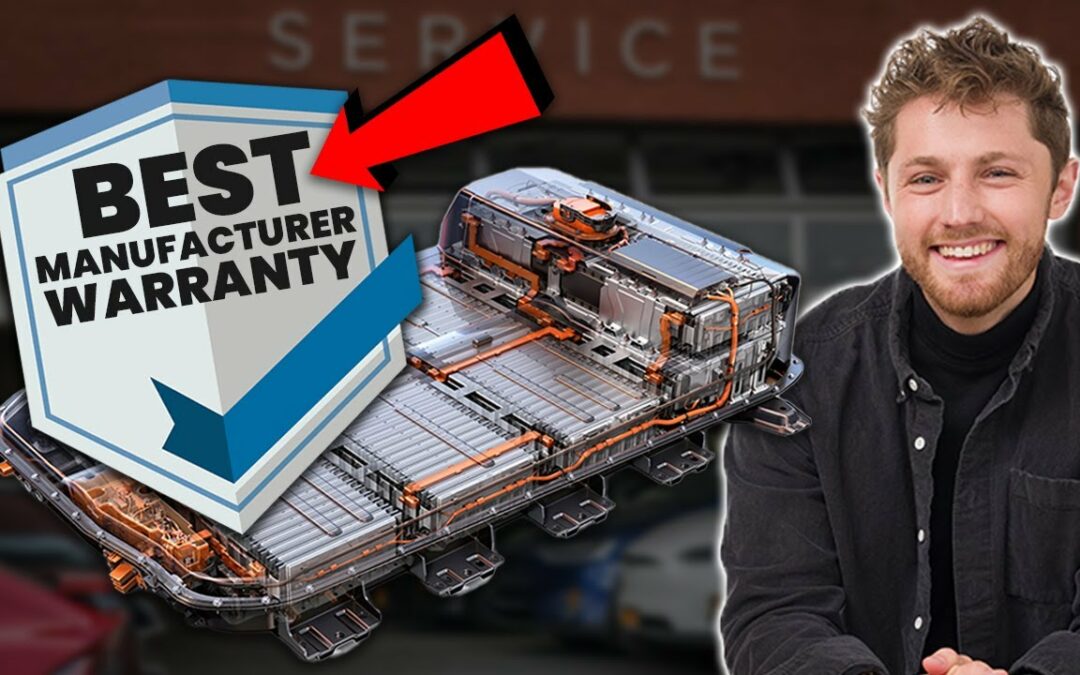
Electric vehicle batteries are expensive to replace — often $10,000 to $20,000 for a fully electric car. While battery costs are expected to drop in the coming years, today’s EV drivers need strong warranty coverage to protect their wallet.
By federal law, all EV and hybrid batteries must be covered for at least 8 years or 100,000 miles. In California, that coverage extends to 10 years or 150,000 miles. But not all warranties are created equal. Some go further than others when it comes to battery degradation, replacement criteria, and coverage for second owners.
So, which EV brands offer the most comprehensive battery warranties in 2025? The top spot might surprise you.
Rivian (8 years or 175,000 miles)
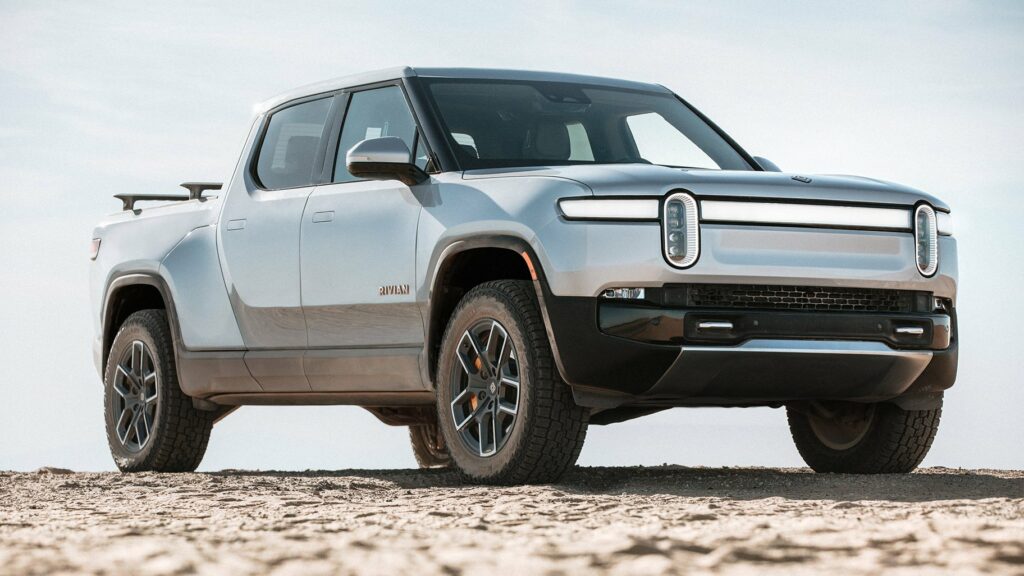
Surprise! The best EV warranty is offered by Rivian for the all-new R1T electric truck and R1S electric SUV. Coverage includes all components inside the high-voltage battery and 70% or more of the battery capacity for 8 years or 175,000 miles, whichever comes first.
Drivetrain components are also covered for 8 years or 175,000 miles. It can be unnerving to purchase a vehicle from a startup like Rivian, so at least they’re offering the best battery warranty there is. Learn more about Rivian’s warranty here.
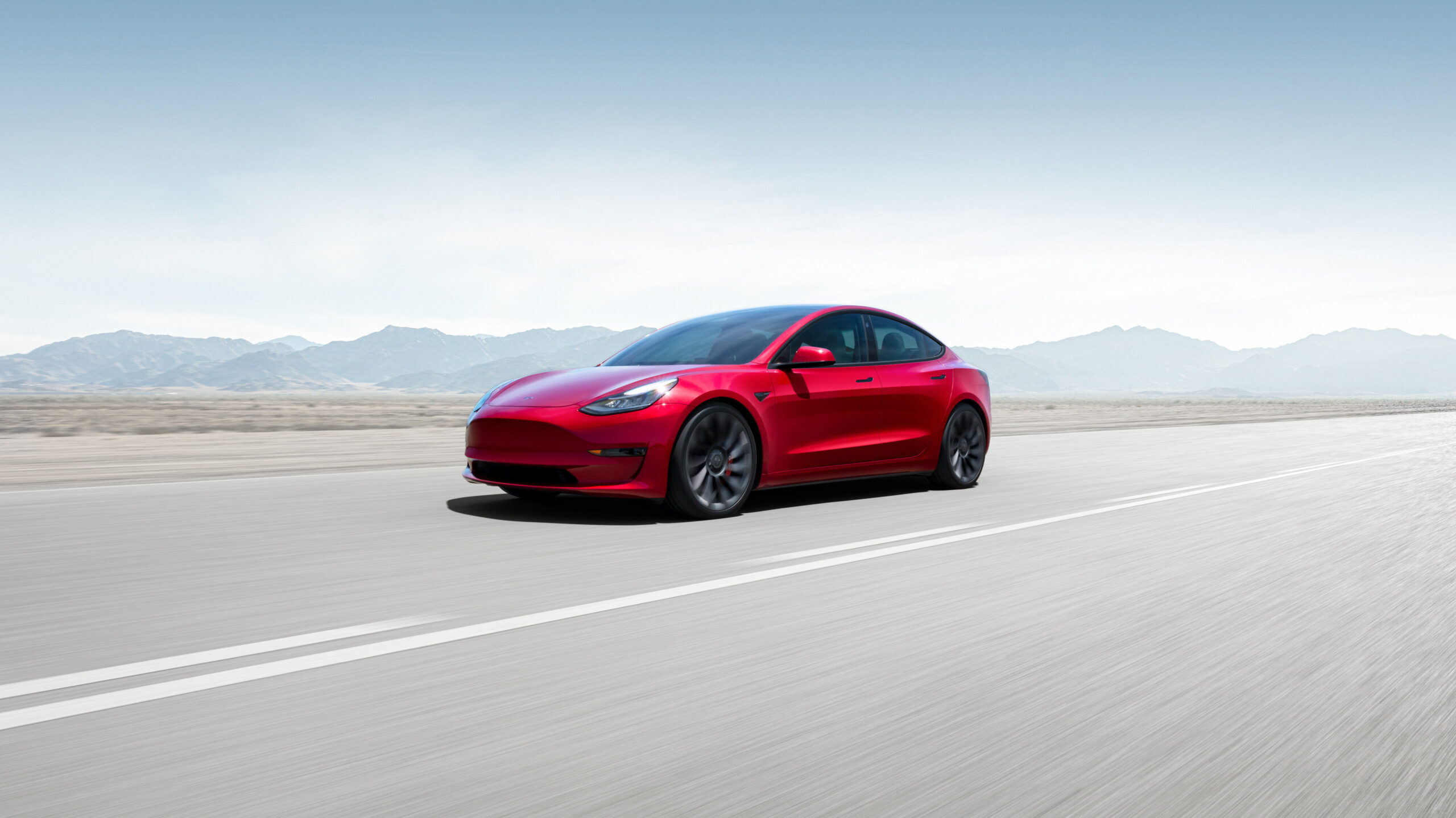
Tesla’s electric powertrain warranty is split into two tiers.
Learn more about Tesla’s battery warranty.
Hyundai and Kia (10 years or 100,000 miles)
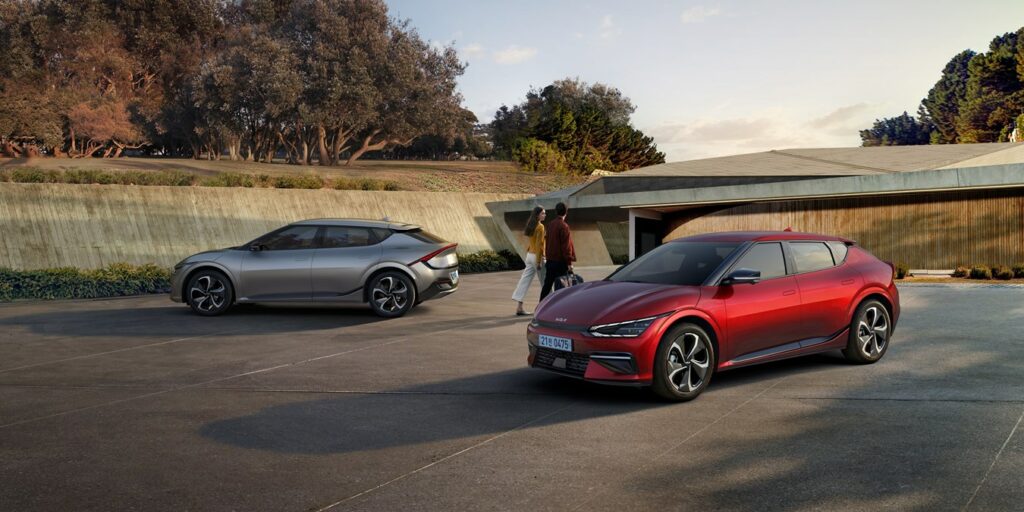
When shopping affordable EVs, you can’t beat Hyundai and Kia’s 10 year/100,000 mile EV warranty. The Hyundai EV warranty covers batteries, motors and powertrain components. There’s also the guarantee of at least 70% battery capacity retention. Hyundai lays it out clearly: “While all electric-car batteries will experience degradation over time, ours will not degrade more than 70 percent of the original capacity during the warranty period.”
Learn more about Hyundai’s electric vehicle battery warranty. You can find Kia’s EV warranty details here.
In 2025, it looks like the industry standard for EV manufacturer warranties is 8 years or 100,000 miles, whichever comes first. This manufacturer warranty applies to the following electric vehicles in 2024:

GM electric models like the Chevrolet Equinox EV, Blazer EV, and Cadillac Lyriq have 8 year/100,000 mile battery warranties with a notable catch. The battery retention portion of the warranty will replace the battery if it falls below 60% of the original capacity under coverage. See the full details here.
Q: What do EV battery warranties cover?
A: Most EV battery warranties cover defects in materials and workmanship, as well as capacity loss beyond a certain threshold (usually 70% of the original capacity). If your battery fails or degrades too quickly, it should be repaired or replaced under warranty.
Q: How long are EV battery warranties?
A: Federal law requires at least 8 years or 100,000 miles of coverage. In California and other CARB-aligned states, coverage extends to 10 years or 150,000 miles. Some automakers go above and beyond these minimums.
Q: Who has the best EV battery warranty in 2025?
A: As of 2025, Hyundai and Kia offer some of the most generous EV battery warranties, with 10-year/100,000-mile coverage that includes transferable protection and specific degradation thresholds. Tesla, Ford, and Toyota also offer strong warranties, but terms vary, especially for used EVs.
Q: Do EV battery warranties transfer to new owners?
A: In many cases, yes — but not always. Some automakers offer fully transferable warranties, while others reduce or void coverage after resale. Always confirm the terms before buying a used EV.
Q: Can I get extended protection for my EV battery?
A: Yes. If you plan to keep your EV long-term, an extended warranty can provide added peace of mind. With CarEdge extended warranty plans, you can cover high-cost components like the battery and electric motor after the factory warranty ends.
CarEdge is a trusted resource for car buyers, offering data-backed insights, negotiation tools, and expert guidance to help consumers save time and money. Since 2019, CarEdge has helped hundreds of thousands of drivers navigate the car-buying process with confidence. Learn more at CarEdge.com.